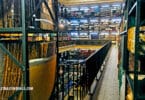Imagine holding a map that traces the winding paths your ancestors took over centuries, spanning continents and oceans, bringing together diverse cultures and histories. This map doesn’t just show places—it shows you who you are in a deeply personal and biological sense. This is what DNA and genetic genealogy offer, a window into the past that can illuminate the complex and fascinating story of your Brazilian heritage.
Brazil’s population is a true melting pot, formed by indigenous peoples, Portuguese colonizers, African slaves, and waves of immigrants from Europe, the Middle East, and Asia. Each of these groups left a genetic legacy, woven together over generations to create the unique bond that is modern Brazil. But how can you untangle these threads to understand your own ancestry? This is where genetic genealogy comes in.
The Unique Genetic Landscape of Brazil
Brazil’s genetic landscape is one of the most diverse in the world. A typical Brazilian might have a blend of European, African, Indigenous, and even Asian ancestry, reflecting the country’s complex history. This diversity is not just cultural—it’s encoded in the DNA of the population, creating a rich mosaic that can be explored through genetic testing.
The major components of Brazilian genetic ancestry can be traced to three primary sources:
1. European Ancestry: Predominantly from Portugal, with significant contributions from Italy, Spain, and Germany, especially during the waves of immigration in the 19th and 20th centuries.
2. African Ancestry: The legacy of the transatlantic slave trade, with most African ancestors in Brazil hailing from West and Central Africa. The genetic impact of this forced migration is significant, particularly in regions like Bahia and Rio de Janeiro.
3. Indigenous Ancestry: The original inhabitants of Brazil, whose genetic contributions are most prominent in the Amazon region but are found throughout the country, often intermingled with European and African genes.
4. Asian and Middle Eastern Ancestry: While smaller in proportion, these influences come from the Japanese, Lebanese, Syrian, and other immigrant groups who arrived in Brazil in the 20th century.How DNA Testing Works: The Science Behind the Results
DNA testing for genealogy typically involves analyzing your autosomal DNA, which is the non-sex chromosomes you inherit from both parents. Autosomal DNA testing is useful because it can provide information about your ancestry from all lines of your family tree, going back several generations.
When you take a DNA test, the company compares your genetic markers to those of people from different regions around the world. By analyzing the similarities, they can estimate the percentage of your ancestry that comes from various populations, such as European, African, or Indigenous groups.
But DNA tests do more than just break down your genetic makeup—they can connect you with living relatives, help you understand migration patterns, and even reveal health-related genetic traits.
The Major DNA Testing Companies and What They Offer
Several companies offer DNA testing services with a focus on genealogy. Here’s a look at some of the major players and what they can offer to those researching Brazilian ancestry:
1. 23andMe: Known for its user-friendly interface and detailed ancestry composition reports, 23andMe can provide insights into your genetic origins, including breakdowns of European, African, and Indigenous American ancestry. It also offers health-related genetic information.
2. AncestryDNA: With one of the largest databases of users, AncestryDNA is excellent for connecting with distant relatives. The platform’s tools allow you to build family trees and explore your ancestry in depth, including potential connections to historical migrations in Brazil.
3. MyHeritage: Popular among genealogists, MyHeritage offers DNA testing that can identify ethnicities and connect you with relatives. It also has a strong focus on European and Jewish ancestry, which can be useful for those with these backgrounds in Brazil.
4. FamilyTreeDNA: This company offers a range of DNA tests, including autosomal, Y-DNA (tracing paternal lines), and mtDNA (tracing maternal lines). FamilyTreeDNA is particularly useful for those looking to explore specific family lines in greater detail.What to Expect: Understanding Your DNA Results
When you receive your DNA results, you’ll typically see a breakdown of your ancestry by percentage and a map highlighting the regions your ancestors came from. In the context of Brazil, your results might show a mix of:
• Iberian Peninsula: Reflecting Portuguese and Spanish roots.
• West Africa: Indicating African ancestry, often with ties to specific regions like Nigeria or Congo.
• Native South American: Highlighting Indigenous ancestry, particularly from the Amazon region.
• Southern Europe: Tracing Italian, Spanish, or other European roots.
• Middle Eastern or Asian: Pointing to Lebanese, Syrian, Japanese, or other immigrant backgrounds.Beyond the percentages, many DNA testing services also provide matches to living relatives who share segments of your DNA. These connections can open up new avenues for genealogical research, helping you expand your family tree and uncover stories that have been passed down through generations.
The Challenges and Limitations of DNA Testing in Brazil
While DNA testing is a powerful tool for exploring ancestry, it’s important to recognize its limitations, especially in the context of Brazilian genealogy:
1. Genetic Overlap: The genetic similarities between populations can sometimes make it difficult to distinguish between certain ancestries. For example, Iberian DNA might be difficult to separate from other Western European or even North African DNA.
2. Underrepresented Populations: Some Indigenous and African populations are underrepresented in the DNA databases used by testing companies. This means that these ancestries might not be as precisely identified, or they might be grouped into broader categories.
3. Historical Context: Understanding your DNA results requires a knowledge of Brazilian history and migration patterns. DNA can tell you where your ancestors likely came from, but it won’t explain the social, economic, or historical context that brought them to Brazil.
4. Privacy Concerns: Sharing your DNA data with testing companies involves privacy considerations. While most companies have robust privacy policies, it’s essential to understand how your data will be used and who will have access to it.Using DNA to Build Your Family Tree
Once you’ve received your DNA results, you can use them to enhance your genealogical research. Here are a few ways to get started:
1. Connect with DNA Matches: Reach out to your DNA matches through the testing platform. These relatives might have valuable information, family trees, or records that can help you expand your own research.
2. Integrate DNA with Traditional Research: Combine your DNA results with historical records, such as birth, marriage, and death certificates, to build a more complete picture of your ancestry.
3. Explore Historical Context: Research the migration patterns, historical events, and social conditions that shaped the lives of your ancestors. This will help you understand why they moved where they did and how they might have lived.
4. Join Genetic Genealogy Communities: Online forums and social media groups focused on genetic genealogy can provide support, resources, and connections to others researching similar ancestries.The Future of Genetic Genealogy in Brazil
As DNA testing technology evolves and more people contribute their genetic data, our understanding of Brazilian ancestry will become even more nuanced. New discoveries will refine how we trace our roots, offering deeper insights into the rich mosaic of cultures that make up Brazil.
For genealogists, genetic genealogy is both a science and an art—one that requires patience, curiosity, and a passion for uncovering the stories hidden in our DNA. By embracing this modern tool, you can connect with your past in ways that were unimaginable just a few decades ago, revealing the intricate threads that make up the fabric of your identity.
So, jump into your DNA results, explore the history they reflect, and let the adventure of discovering your Brazilian heritage continue!






